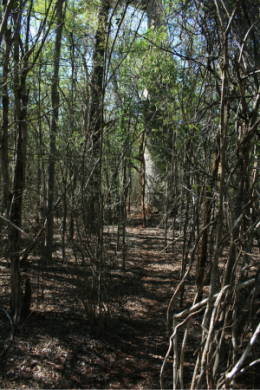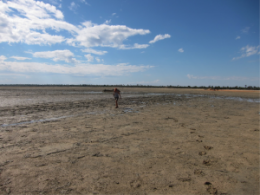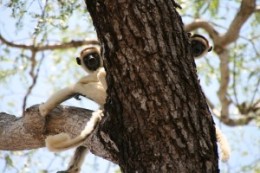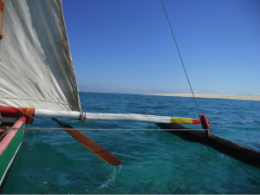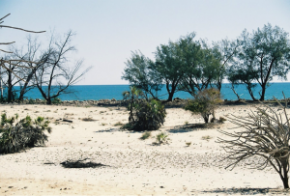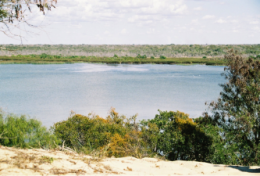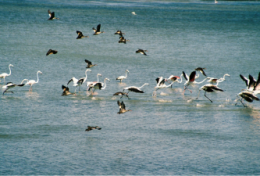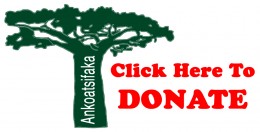Kirindy Mitea National Park
The Kirindy Mitea National Park (sometimes spelled Kirindy Mité) is an amazing place for research and for tourists. It encompasses the transition between three ecosystems: southern spiny desert, western dry forest, and coastal mangrove. Thus, the biodiversity in the park is very interesting. The Ankoatsifaka Research Station is located in the deciduous, dry forest.
The national park also includes a marine component. Whales, hammerhead sharks, nudibranchs, and coral reefs are among the many sights within the marine park.
Because Madagascar has been isolated from other large landmasses for millions of years, it has incredible biodiversity. Much of the flora and fauna are found nowhere else in the world.

The fossa (Cryptoprocta ferox) is a predator found only in Madagascar. It is easy to see in the Kirindy Mitea National Park. photo credit: Rebecca Lewis
The park is perhaps best known for the lemurs and birdlife associated with the sacred lakes in the southern part of the park.
Most of the research in the Kirindy Mitea National Park is conducted at the Ankoatsifaka Research Station. Lemurs have been the focus of much of the research at the field station, particularly the Verreaux’s sifaka (Propithecus verreauxi). Researchers from all over the world have studied various aspects of the wildlife in the park.
